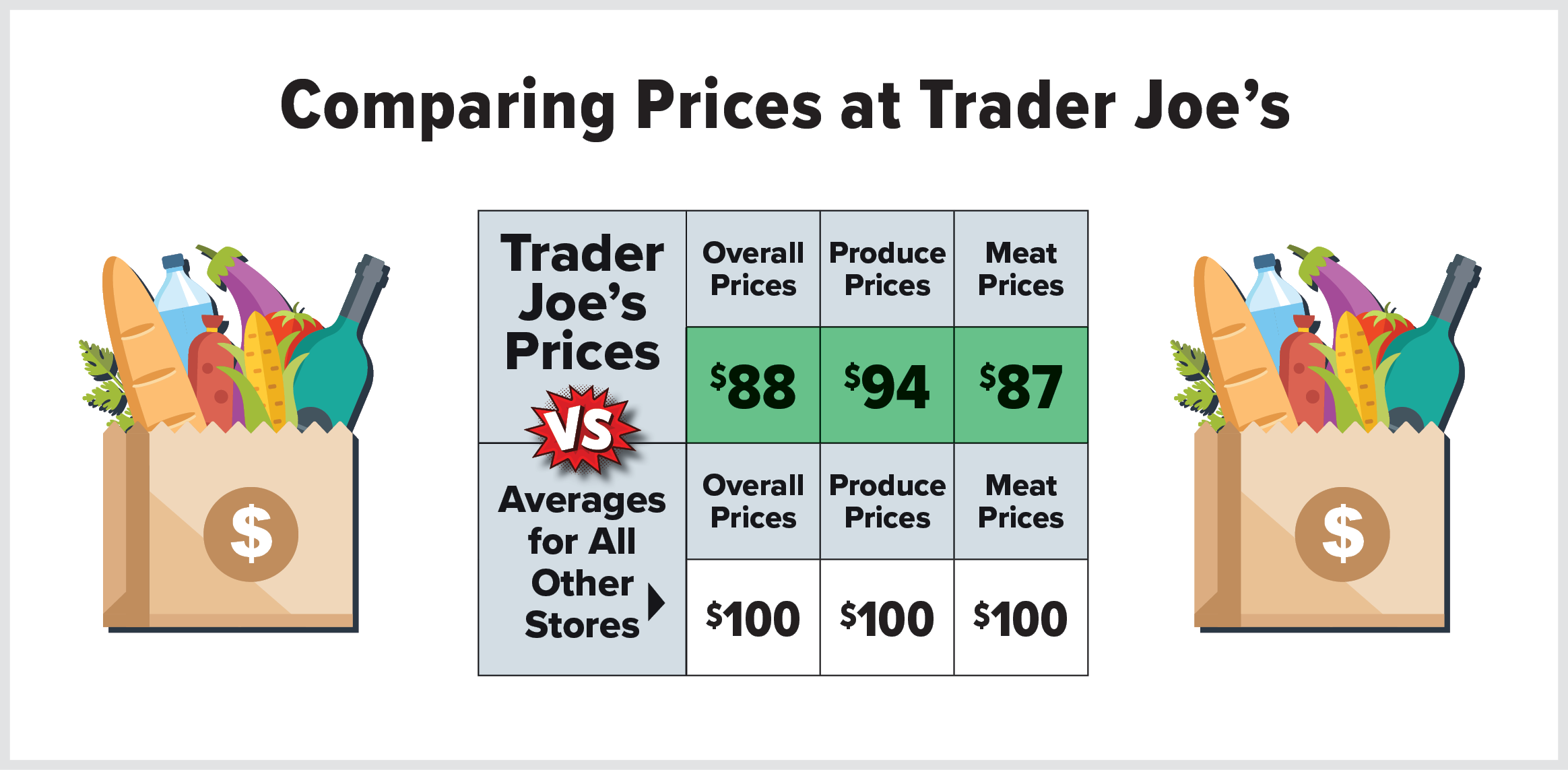How do Trader Joe’s Prices Compare?
Last updated November 2025
Seventy-six percent of survey respondents rated Trader Joe’s “superior” for “overall quality.” And our price survey found TJ’s prices were about 12 percent lower than the all-store average.
These savings are partly explained by Trader Joe’s smaller-format stores, which have much lower overhead costs than conventional supermarkets.
TJ’s also benefits from different expectations. Shoppers at QFC, Walmart, etc., expect to always find their favorite brands on the shelves. But Trader Joe’s carries mostly its own brands, meaning you won’t find Coke, Heinz ketchup, Hellmann’s mayo, and other big names at TJ’s. So, its shoppers don’t expect wide choices of brands or sizes but trade that quirkiness for comparable very-low-priced products.
To compare prices at Trader Joe’s, we used a modified survey. Because our market basket of 150 items largely consists of national-brand products, and because Trader Joe’s offers mainly its own brands, we couldn’t compare its prices to those at conventional supermarkets using our standard price survey. Instead, we developed a special survey that included the same fresh produce, meats, and dairy items as in our standard survey, but for conventional grocery stores we substituted their cheapest available comparable store brands. (When comparing prices, we used per-unit pricing—for example, price per ounce.)



